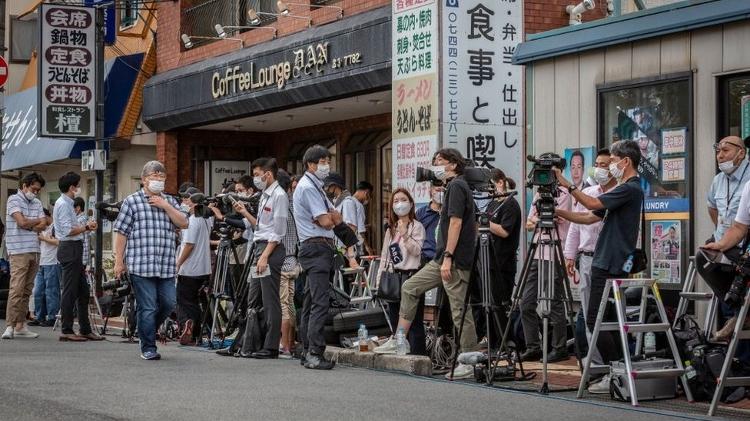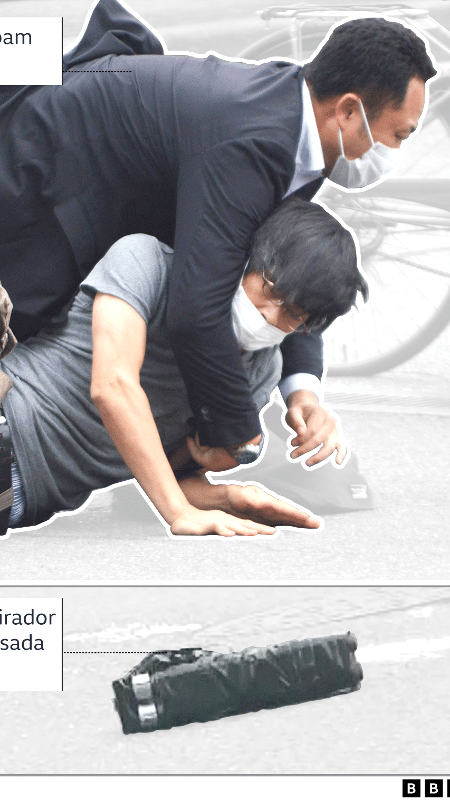Since the news of the shooting on former Japanese Prime Minister Shinzo Abe was published on Friday 07/08, messages have been circulating among friends and acquaintances with the same question: How could this have happened in Japan?
Living in Japan accustoms people not to think about violent crimes.
Also, the identity of the victim makes the news all the more shocking. Shinzo Abe was no longer the prime minister of Japan, but he was still an important figure in Japanese public life and arguably the most well-known politician in the country for the past three decades.
Who would want to kill Abe? Because?
Which would be equivalent – another act of political violence, equally shocking to the local population. I think of the shooting death of Swedish Prime Minister Olof Palme in 1986, and even the murder of American President John F. Kennedy in 1963.
Palme was shot on a busy street in central Stockholm, the first time a Swedish national political leader has been killed since 1792. The motive for the crime was never clear.
I’m not exaggerating when I say that people in Japan don’t think about violent crime.
According to the Small Arms Survey, which tracks this type of violence globally, there were 32 deaths attributed to firearms in Japan in 2020. Japan has a population of about 125 million – by comparison, Brazil has a population of 212 million and recorded 39,000 firearm homicides in 2020.
Yes, there is the Yakuza, Japan’s notorious mafia. But most people never come into contact with it. And even the Yakuza shun weapons because the penalties for illegal possession are not worth it.
Owning a gun in Japan is extremely difficult. A criminal record does not require extensive background checks on the person, including compulsory education, psychological evaluation, and police interviews with neighbors.
As a result, gun crime is almost nonexistent here. On average, fewer than ten firearms-related deaths occur in Japan each year. There were only three in 2017.
It’s not surprising, then, that after the assassination attempt on Shinzo Abe, most of the attention turned to the shooter and the weapon he used.
Who is it? Where did he get the gun? Japanese media reported that the 41-year-old suspect was a former member of the country’s self-defense forces equivalent to the Armed Forces.
But on closer inspection, he only spent three years in the navy.
The weapon he uses is even more intriguing. Photos taken on the ground after shooting, it looks like a homemade weapon. Two pieces of steel tubing taped together with black duct tape, a kind of handmade trigger. It looks like something manufactured from instructions obtained from the Internet.
So is this a deliberate political attack, or is it the act of a dreamer, someone who wants to be famous, by shooting a famous person? So far we don’t know.
Japan has certainly had its fair share of political assassinations. Most notably, in 1960, Inejiro Asanuma, leader of the Japan Socialist Party, was stabbed in the stomach by a right-wing fanatic wielding a samurai sword. While far-right extremists still exist in Japan, Abe, a right-wing nationalist, did not seem like a likely target.
In recent years, we have seen another type of crime become more common here. A quiet, lonely man holding a grudge against someone or something.
In 2019, a man set fire to a building in Kyoto that houses a popular animation studio, killing 36 people.
The man told police he held a grudge against the studio for “stealing his work”.
In another incident in 2008, a young man drove a truck into a crowd of shoppers in Tokyo’s Akihabara district, then got out of the vehicle and began stabbing people watching the scene. Seven were killed.
Before he carried out the attack, he had posted messages on the internet saying “I’m going to kill people in Akihabara” and “I don’t have a single friend, I’m being ignored because I’m ugly. I’m worse”. than trash.”
It is still unclear whether Abe’s shot fell into the first or second category. But it seems certain that the assassination will change Japan.
Given how safe Japan is, security here is very relaxed. During the election campaign, as in the current campaign, politicians literally stand on street corners, giving speeches and shaking hands with passersby.
This is almost certainly why Abe’s attacker came so close and unloaded the gun he had made himself.
After today it will definitely have to change.
Japan goes to the polls on Sunday, 10/07, to renew the Upper House of Parliament. Following the attack on Abe, Prime Minister Kishida confirmed the election schedule and instructed the security of her ministers to be strengthened.
The current system of protecting politicians was introduced in 1975 after an incident involving then-prime minister Takeo Miki. Being attacked by a member of the far-right group while attending a funeral, he continued to criticize the Tokyo Metropolitan Police for not doing enough to ensure his safety.
The weapon used in the murder
Tetsuya Yamagami, 41, took the life of former prime minister Shinzo Abe with a 40-centimeter-long handcrafted gun. Tetsuya Yamagami fired two shots with the gun before being immobilized by security. He didn’t react.
He confessed to the crime to the police, saying that he had planned everything a few months ago and that he was not happy with the former prime minister, so he planned to kill him.
Also in Nara, during a search of the suspect’s home, police found objects similar to the weapon used in the attack and other explosives.
Homemade artifacts have plagued police in recent years, but have become even more alarming after the proliferation of 3D printers.
These devices make it possible to manufacture parts, parts and whole objects at home in different types of materials.
“We do inspections like we do with conventional guns, but these homemade guns are very hard to find, because nowadays anyone can buy a 3D printer,” said an instructor at the National Police Academy.
“We have to change the laws and improve the security system.”
In Abe’s case, authorities did not say whether the homemade weapon, with its two cylinders wrapped in black tape and exposed wires, was 3D printed.
– Text originally published at http://bbc.co.uk/portuguese/internacional-62101010.
source: Noticias
[author_name]

